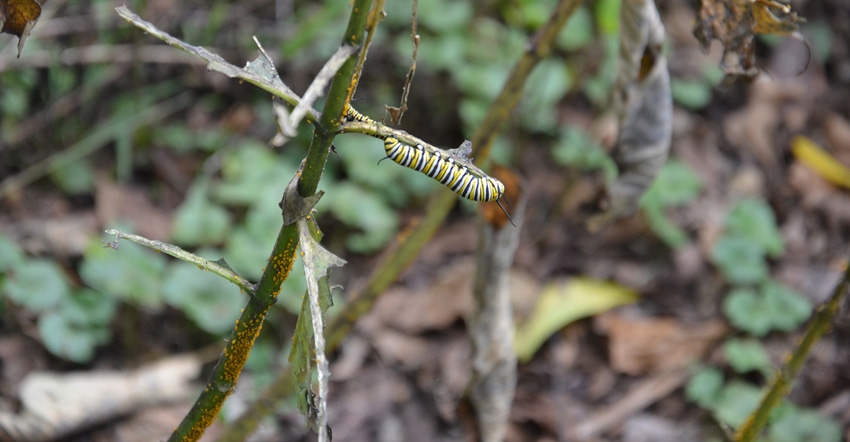
As harvest wraps up, what should you do with all of the yield data you have collected? Tony Bailey says even if you don’t have yield maps, you should still know which locations in fields are unproductive. Bailey is the state conservation agronomist with the Natural Resources Conservation Service.
These spots are often planted the same as the rest of the field, but they lose money most years. Why continue to plant and fertilize these areas?
The argument often is that the low, wet spot is the most productive area in a dry year. Will that one good year make up for the other years money was lost? Plus, Bailey says, these unproductive spots are also some of the most environmentally sensitive locations. It may be the low spot with a tile riser that is a direct conduit for surface water runoff to open ditches, streams and rivers.
An eroded site is more likely to deposit sediment off-site into streams and rivers. Planting these unproductive spots to grasses and legumes for wildlife and pollinator habitat is an excellent option, Bailey says. In some cases, depending upon the actual size of the area and other factors, cost-share money may be available to help establish wildlife areas, pollinator plots or an area for monarch butterflies. You must still control invasive and herbicide-resistant weeds.
Increase average yield
Sometimes it’s tough to identify the yield-limiting factor in the average areas of a field, but the least-productive spots are often easy to identify.
What is the fastest way to increase yield per acre for a field? As Bailey notes above, it’s to stop farming areas with little or no yield in most years.
For this scenario, assume 20 acres of a cornfield that averages 175 bushels per acre are planted, but 1 acre drowns out every year. Just by no longer planting that acre, the field average on the 19 acres planted jumps to 184 bushels per acre.
Here is a breakdown of this example and how, in theory, you could actually net more profit off the field by not planting the unproductive acre, even if it’s rented land.
• Farm entire 20 acres. Assume $3.50 per bushel for corn, with whole field in corn. Total gross revenue equals roughly 3,500 bushels x $3.50 per bushel = $12,250. Assume total direct expenses including land (rent at $200 per acre, direct costs at $250 per acre, no return to equipment or labor) is $9,000.
Return left for labor and equipment: $12,250 - $9,000 = $3,250 for entire field
• Farm 19 acres, leave unproductive acre out. Assume zero yield on that acre, and don’t include possible USDA payment for enrolling in a wildlife or pollinator program. Corn is $3.50 per bushel. Total gross revenue equals 3,500 bushels x $3.50 per bushel = $12,250. Direct expenses with rent for that acre included equals 19 x $450 per acre plus $200 per acre rent times 1 = $8,750.
Return left for labor and equipment: $12,250 - $8,750 = $3,500 for entire field — some $350 more
If you own the 20 acres free and clear, assume $50 property taxes. The new expense total becomes $8,600, with $3,650 left for labor and equipment for the entire field, or $400 more than farming every acre.
This example is simplified, but it makes the point: Sometimes not farming an area can net more, even on rented land.
About the Author(s)
You May Also Like




